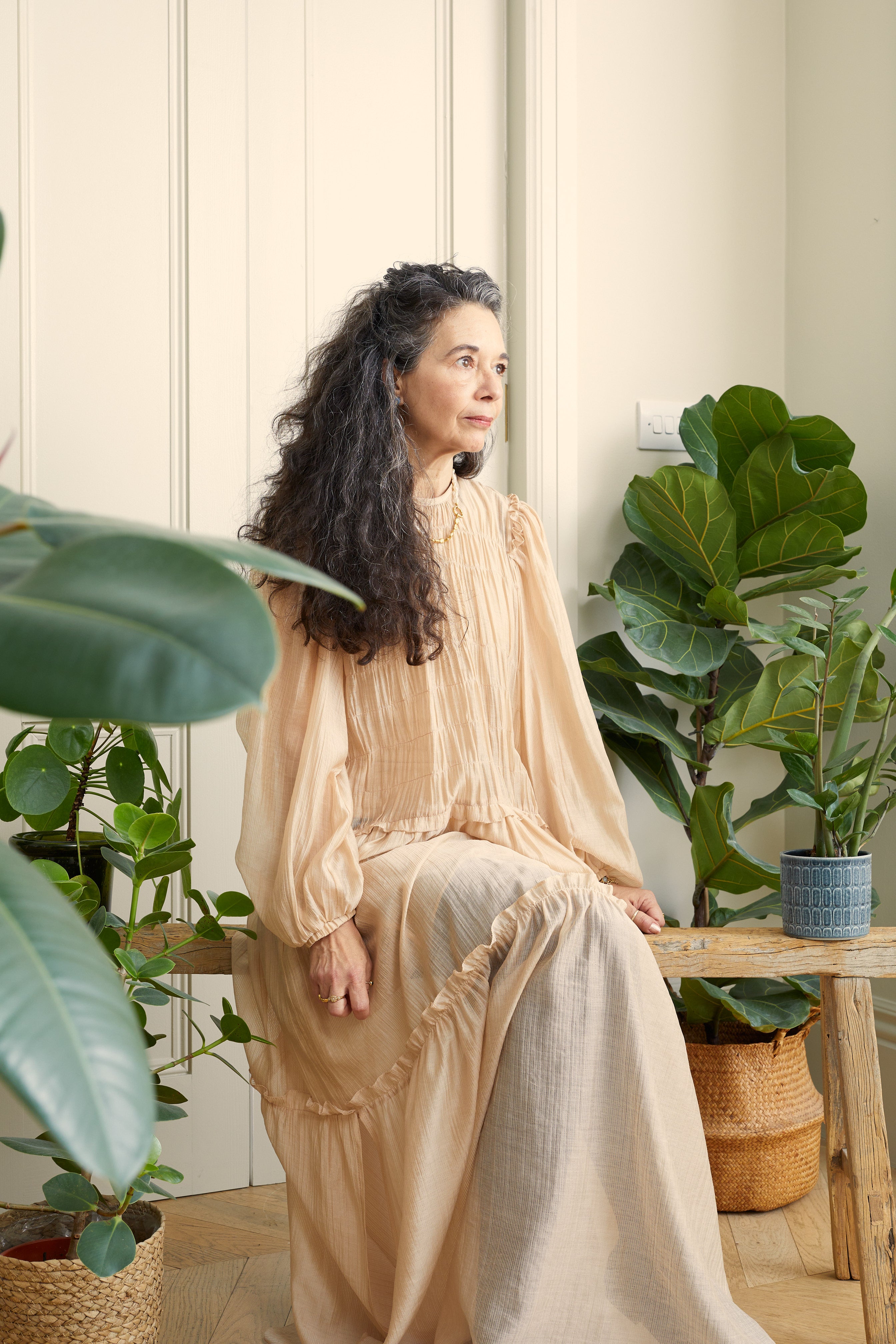Orsola De Castro
Orsola wears styles from our latest curated edit. We spoke to Orsola about her career in fashion, transparency in the industry today and her pearls of wisdom for loving your clothes for as long as possible.

“Q: You’re a pioneer when it comes to sustainable fashion. Can you share a bit about your journey to where you are now? How did you get started in this space?”
Oddly enough it was my broken jumper, which led to my brand From Somewhere (1997 - 2014) becoming a pioneer of upcycling, and carrying on in this industry as practitioner, curator, mentor and sustainable fashion activist.
Right now I am in a pretty creative space: I resigned from my day to day job at Fashion Revolution a year ago, and I am experimenting with a whole new life, as well as learning how not to be busy and only doing things that matter to me.
“Q: Fashion Revolution has grown to be the world’s largest fashion activism movement. What inspired its launch?"
We were born as a result of the Rana Plaza disaster, in 2013. At the time I was one of the founders and curators of Estethica - the sustainable area during London Fashion Week (which I have recently relaunched albeit in a different incarnation!) - and it was one of our exhibitors, Carry Somers (of the Fairtrade panama hat brand Pachacuti) who had the idea. Carry called me a week after the collapse with an idea for a commemorative event, a ‘Fashion Revolution Day’, to be held yearly on April 24 to mark the anniversary of the tragedy and raise awareness of the social and environmental cost of the fashion supply chains.
The thought became a vision, a team, then a campaign, then a global movement; the day became a week, and the rest, as they say, is history.


“Q: This year is 10 years since the Rana Plaza disaster, which exposed the worldwide lack of transparency in fashion supply chains. At Mother of Pearl, we have worked hard to trace our supply chains and are committed to transparency across our entire supply chain, not just final garment production. How has transparency in fashion evolved in the past decade? What still needs to change?”
Transparency should be fundamental in the running of any business. At Fashion Revolution we have the Fashion Transparency Index – a tool for measuring the transparency and public disclosure of 200 of the world’s leading fashion and apparel brands, and although we are seeing a net increase in companies publishing their factories lists and other supply chain information, much of the progress made towards social and environmental best practice, most mainstream brands aren’t addressing the burning issues of the moment: paying supply chain workers a living wage and quantity vs quality, and how mass production is accelerating disposal beyond all common sense.
“Q: To what extent do you think customers today are more aware of the consequences of the fashion industry? How can we continue to raise awareness?”
Fashion brands are becoming aware that knowing who makes our clothes, and in what conditions, is important to prevent accidents like the Rana Plaza disaster, which killed over 1,000 people. This tragedy was a huge wake up call for the industry. Consumers, too, are becoming more knowledgeable. Young activists and kids the world over are rising to demand a safer future and everyone is becoming more aware that we are near tipping point, and if we want to prevent species extinction (including our own!) and drowning in plastic and textile waste, we must look at our shopping habits as a starting point.


“Q: Your book, Loved Clothes Last, explores the fact that the most sustainable garment is the one that you already own. It encourages us to engage emotionally with our clothes, keep them for as long as possible and take up caring for and mending our clothes as a revolutionary act. Why is this so important? What are your pearls of wisdom for loving your clothes as long as possible?”
Caring, maintaining and repairing plays a huge part in how we can contribute to slowing down the system. It speaks clearly about our preferences: I intend to keep. And it fosters the need for mending, repairing and customising services, which not only guarantee the longevity of our clothes, but provide dignified work to the skilled tailors and seamstresses who affect them.
“Q: You modelled some of our collection for our photoshoot. What are your favourite MOP pieces and why?”
I have an ongoing crush for all my MOP pieces: I adore the black lightweight wide pant trousers (Britton), which I wear incessantly, especially when I travel (they fold tiny and are good for daytime or evening), but my current top favourite is the Emily yellow dress – it’s like wearing sunshine.

